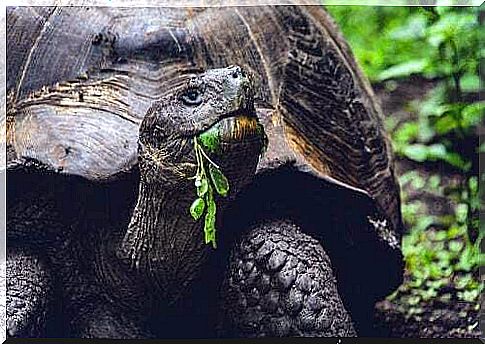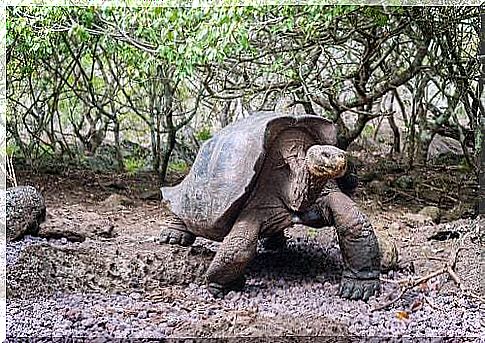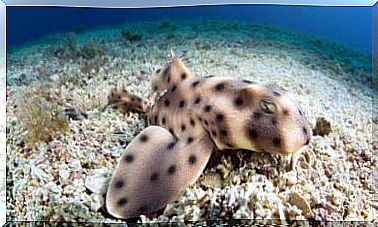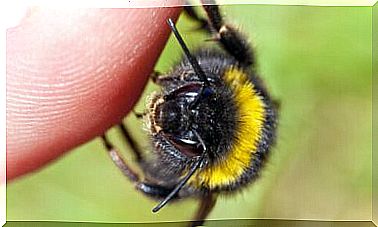The Giant Tortoise Of The Galapagos Islands

Not only one, but two of the 10 species of tortoises in the world live in the Galapagos Islands (two have become extinct). You think we can’t find them anywhere else. In this article we talk about the giant tortoise of the Galapagos Islands, an archipelago of Ecuador.
Characteristics of the Galapagos giant tortoise
Did you know that the Galapagos Islands were named in this way in “honor” of the giant tortoises that explorers and naturalists found upon arrival in the 16th century? Subsequently, Charles Darwin divided them into subspecies of a single family: Chelonoidis Niger.
They are the largest Chelonids that inhabit the planet : they can measure more than two meters and weigh about 500 kilos. In addition, they hold another record, that of longevity, since in nature they can live more than 100 years.

Today we can find some specimens of the giant tortoise in zoos and nature reserves in various parts of the world, where they reach no less than 170 years of life. Regarding the taxonomy, there are three different types of shell or carapace, which allow their differentiation:
1. Dome shaped shell
These turtles mainly inhabit the highlands of the archipelago. In general, they prefer humid environments, such as those found on the islands of Santa Cruz and Isabela (the latter precisely in the volcano area).
The dome-shaped shell allows the giant tortoise to move through dense vegetation without the danger of getting trapped in the branches. In addition, it has a shorter neck than its “relatives” and a larger chest.
2. Saddle-shaped carapace
The San Cristóbal giant tortoise is one of the clearest examples of this subgroup, which lives mainly in sparsely vegetated and desert areas. It has a particular elevation in the front part of the carapace, which together with the long neck, allows it to reach the tall leaves of the bushes or the leaves of the cactus.
3. Intermediate carapace
It could be said that it is a combination of the other two types of shells. One of the subspecies that exhibits this feature is the Santa Cruz giant tortoise.
Behavior of the Galapagos Giant Tortoise
All the giant tortoises of the Galapagos Islands are herbivores and have no teeth. To feed they use the pointed mouth, with which they cut leaves and fruits. Their diet consists of plants, fruits, water ferns, lichens and cacti.
What do the giant tortoises of the Galapagos Islands eat?
The Galapagos Islands giant tortoise eats when it finds available food, even when it hasn’t finished digesting what it has previously consumed. In addition, it has the ability to resist for a long time without drinking water, because it extracts the liquid it needs from the plants. When he comes across a body of fresh water, he doesn’t hesitate to dive in.
This turtle is very slow and does not advance more than 300 meters per hour. However, this slowness is offset by great stamina, as he can walk for three days continuously without stopping to rest.

Giant tortoises that live on the wetter islands migrate after the rainy season ends to the mountainous area, where grass is more abundant. It is a gregarious animal, that is, used to living in a group, so it forms several herds over the course of its life.
It is also worth underlining the symbiotic or mutualistic relationship of these turtles with some species of finches that inhabit the Galapagos. These rest on the turtle’s head and feed on the ticks they have on their necks.
The giant tortoise is a cold-blooded animal and, for this reason, spends a lot of time in the sun – at least two hours a day – especially in the morning. It remains active for up to eight hours. In some cases, to keep the body temperature high, it immerses itself in water and mud wells near volcanoes. In addition, these “baths” allow them to protect themselves from parasites and insects such as mosquitoes.
There is no doubt that the giant tortoise of the Galapagos Islands is a fascinating animal… If you are lucky enough to visit this archipelago you can observe them while they eat or follow the circular and deep tracks they leave on the mud and sand.









